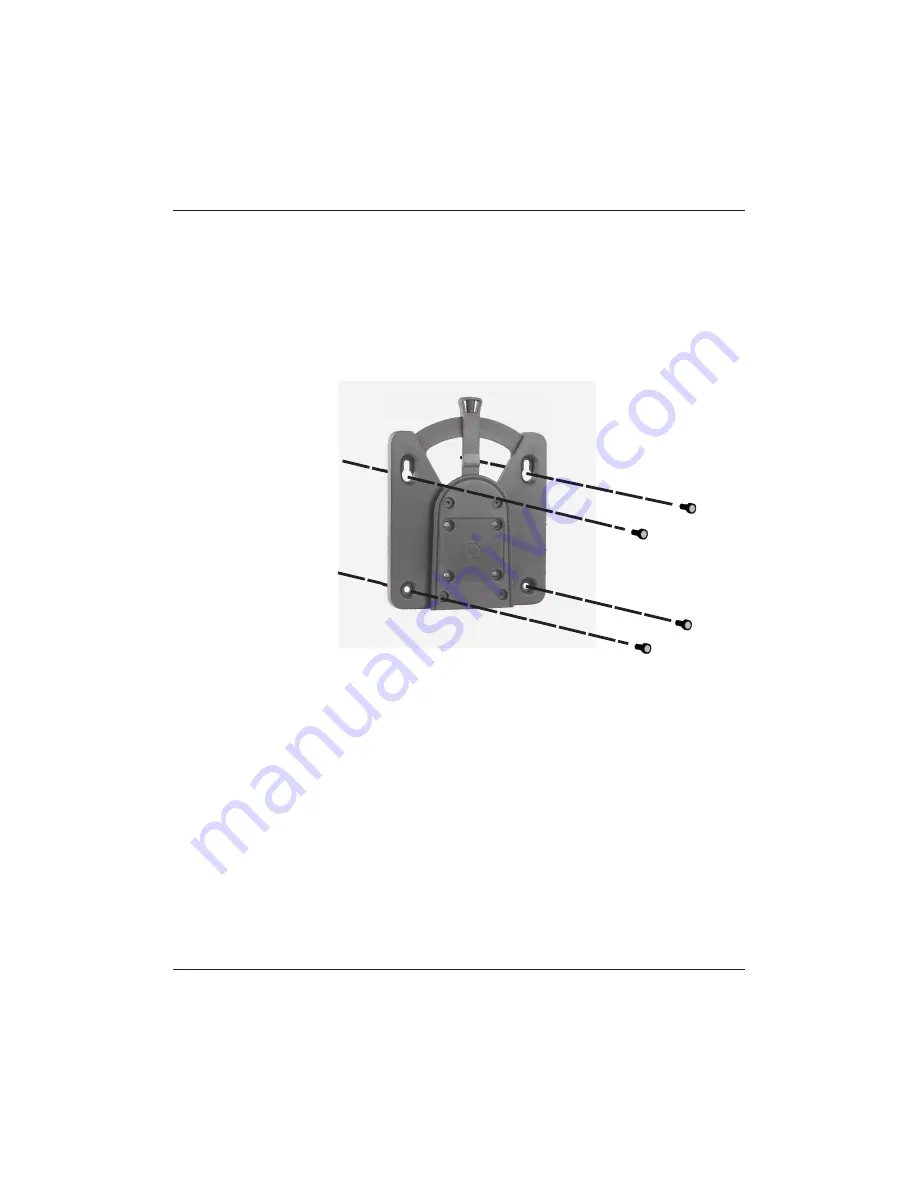
Hardware Reference Guide
www.hp.com
C-3
Mounting the thin client
Connecting the HP Quick Release to another device
2. Using four screws included in the mounting device kit, attach the
other side of the HP Quick Release to the device to which you
will mount the thin client. Make sure the release lever points
Upward.
V
V
V
V













































